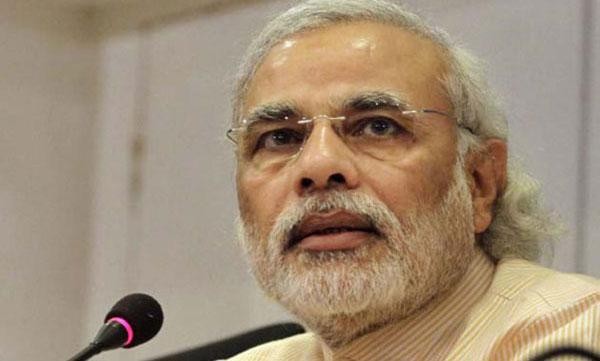
Prime Minister Narendra Modi’s decision to allocate 10 percent quota in jobs and education to the general category on the basis of economic criteria underlines the art and craft of a genius who has mastered the political equivalent of cricket’s reverse sweep, or its more evolved cousin, the switch hit.
Modi is an OBC, only the second from the disadvantaged castes to rise to be the Prime Minister of India after the Mandalisation of Indian polity and society. The rise of Deve Gowda, the only other backward prime minister since 1992, was coincidental, not central, to Mandal politics. It is a measure of the empowerment of the backward castes for Modi, the embodiment of that movement, to now offer ten percent quota for the forward castes, a numerical minority. As close to a switch hit in politics as you can get.
In a masterly display of his skills, he has not just reversed the direction of the political narrative, swinging it away from the Opposition, but also changed his stance to hit the prevailing Mandal logic out of the park. His game, it was evident in the Parliament on Tuesday, has caught the opponents off-guard and left them with just one choice: applaud his masterstroke with a tinge of envy.
Now, look at the narrative that the Congress and other Opposition parties have been building all these years. They have been assiduously creating a political climate which stoked rebellion primarily among upper castes. The manner in which the Patel agitation in Gujarat and the Maratha agitation in Maharashtra were engineered was clearly intended to build an anti-government mood. As recently as last December, the Congress reaped the benefits of upper caste resentment in the Assembly elections in Madhya Pradesh, Rajasthan and Chhattisgarh. The government’s decision to overturn the Supreme Court decision that diluted the SC/ST (Prevention of Atrocities) Act rubbed the upper castes the wrong way.
Of course, what appeared to have further exacerbated the BJP’s woes is the raking up of the Ram Mandir issue in Ayodhya by the Rashtriya Swayamsevak Sangh (RSS) and Vishwa Hindu Parishad (VHP). The Congress has been gleefully leveraging the discomfiture of the Modi government on the Ayodhya issue to alienate upper caste Hindus.
In essence, the constituency which is considered to be the core voters of the BJP has been showing signs of alienation towards the fag end of the government’s tenure. But Modi has again proved that the aphorism "a day is too long in politics" is literally correct. Contrast his latest move with the implementation of the Mandal commission report, and you will realise the difference. VP Singh introduced the OBC reservation when he found himself politically vulnerable. Chaudhary Devi Lal had risen in revolt to mobilise the Jats and OBCs against the government. Singh’s move too was a political masterstroke — except for the fact that it provoked a cynical reaction from upper caste youth and triggered caste clashes across north India.
The fact that OBC reservation found acceptance across the political spectrum was a measure of political genius of Singh. Still, he emerged as the most hated figure among politicians of those times. The apparent reason for this hatred emanated from the assumption that his move to implement the recommendations of the Mandal commission was aimed at consolidating his support base among the OBCs (a numerically strong social support base) at the expense of numerically lesser but politically vocal upper castes.
Singh realised it too late that he would not emerge as a natural leader of the OBC consolidation. In one of my interviews with him, the former prime minister admitted that he had known it all along that given his feudal background and his caste (Rajput), he would never be a leader of the OBCs. “But a worm has to die to give birth to butterfly," he would say on his political future.
Singh became irrelevant after 1991 even though his politics led to the emergence of regional satraps like Mulayam Singh Yadav and Mayawati in Uttar Pradesh, and Lalu Prasad Yadav in Bihar. In the Hindi heartland, the grammar of politics radically changed as upper castes reconciled themselves to playing second fiddle to OBC leadership. Ironically, the BJP which began by mobilising upper castes in the Ram Janmabhoomi agitation later tactically veered towards propping up OBC leadership in the garb of Hindutva.
Modi’s emergence is the ultimate fruition of the Mandal politics with a Hindutva hue. But far from Singh’s politics, Modi is not seen as promoting sectional interests to protect his political turf. In the cynical game of power, his move to side with the numerically inferior upper castes just before the election is nothing short of audacious. Unlike Singh, he is firmly in the saddle till the next election and there is no rebellion like Devi Lal’s within the saffron ranks. People may still debate on the rising and falling index of Modi’s popularity but there is no doubt that he still reigns supreme among all contemporary leaders.
The Bill’s constitutional tenability will need to pass the scrutiny of the Supreme Court even if it is passed in the Rajya Sabha. Since there are state assemblies that have broken the ceiling of 50 percent reservation set by the Supreme Court in the Indra Sawhney vs Union of India case of 1992 on the Mandal reservation, there are precedents to back up the move. More than legally, the decision’s political objective, irrespective of questions about its symbolism, seems to have been achieved. Coming from an OBC background, Modi’s decision to give 10 percent reservation can at best be described as a “reverse Mandalisation” of Indian politics.


.jpeg)

